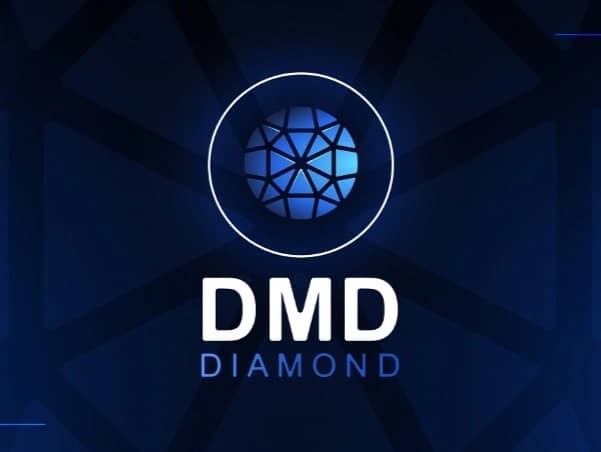订阅 wiki
Share wiki
Bookmark
DMD Diamond
DMD Diamond
DMD Diamond 是一个旨在结合比特币和以太坊特性的区块链项目。它采用合作共识算法,并支持以太坊虚拟机 (EVM)。该项目专注于稀缺性、安全性、去中心化和社区治理。 [1]
概述
DMD Diamond是一个成熟的区块链项目,通过多次升级,整合了比特币、以太坊和其他平台的功能,以应对持续的技术和市场挑战。最新的DMD Diamond v4是一个独立的区块链,结合了应用、网络、治理和共识层,专为快速、低成本、可互操作的去中心化应用程序而设计。
它采用混合共识机制,将Honey Badger 拜占庭容错 (HBBFT) 与委托权益证明 (POSDAO) 相结合。它提供快速的交易速度、低费用和低碳足迹。原生DMD币的固定供应量为438万枚,使其比比特币稀缺得多,并保持一种独特的机制,将无人认领或废弃的币回收到流通中,从而实现可持续的网络增长,而无需增加总供应量。DMD Diamond v4还优先考虑与其他区块链的互操作性,支持跨链通信和与基于以太坊的项目合作,以促进整个加密货币生态系统的稳定和整合。[2]
历史
DMD Diamond 起源于 2013 年中期,是众多 比特币 分叉 之一,作为一种使用混合 工作量证明 (PoW) 和 权益证明 (PoS) 模型的限量供应 加密货币 推出。在最初的创建者在发布后不久消失后,一个小型社区在 Bitcointalk 上形成,以维护和开发该项目,并在 2014 年通过 DMDv2 稳定了 质押 算法。这种社区驱动的努力帮助 DMD 幸免于许多常见的早期 加密 陷阱,如 拉高抛售 计划,培养了一个忠实的基地,被其稀缺性和在传统系统之外实现财务独立的愿景所吸引。
随着时间的推移,该项目通过多次升级不断发展:DMDv1 结合了多种代币的元素;DMDv2 改进了 质押 并延长了排放时间表;DMDv3 进一步完善了奖励系统;DMDv4 引入了与 Honey Badger 拜占庭容错 (HBBFT) 和 委托权益证明 (POSDAO) 的合作共识,以实现更快的交易速度和可持续性。DMD 还通过将其 PoW 算法从 Scrypt 切换到抗 ASIC 的 Groestl 来应对行业挑战,在保留 区块链 历史的同时,实现了更公平的 挖矿。该项目探索了 Masternode 以增强实用性,但专注于更快、更环保的共识模型。
在繁荣和萧条周期中,DMD Diamond 始终保持在前 100 名代币中的地位,并因其适应和升级的能力而赢得了“加密凤凰”的美誉。其持续的演进强调长期可行性、可持续性和互操作性,现在支持智能合约和 以太坊 兼容性,以促进更广泛的 去中心化应用程序 开发。 [3]
特性
DMD Diamond V4 是一个区块链平台,集成了委托权益证明验证者选举与 Honey Badger 拜占庭容错 (HBBFT) 共识协议。这种组合实现了快速和最终的交易结算,抵抗审查,并防止网络分叉。该系统支持以太坊虚拟机 (EVM)兼容的智能合约,允许去中心化应用程序从以太坊和类似链的互操作性和迁移。
该网络具有固定的 438 万个 DMD 代币的总供应量,全部在创世时创建,没有挖矿或通货膨胀机制。它提供超过每秒 400 笔交易的吞吐量,并包括图灵完备的智能合约功能。验证者每 12 小时轮换一次,以限制中心化,并且需要三分之二的共识来验证更改或分叉,从而消除孤块。其他技术特性包括用于增加安全性的阈值加密,避免在低活动期间不必要的空区块,以及回收丢失的代币以维持长期可持续性的能力。
DMD Diamond 通过限制代币供应和避免未来稀释来强调稀缺性。它通过环保设计、验证者奖励系统和恢复非活跃资产的机制来促进可持续性。通过设置每个验证者 50,000 个 DMD 的质押上限来减少权力集中,从而加强了网络的公平性。使用 POSDAO 进行验证者奖励和轮换支持去中心化参与。
HBBFT 协议增强了安全性,确保了最终性并消除了孤立交易的风险。该网络还具有抗审查性,并包括防止交易抢先交易的机制。计划通过 DAO 模块进行链上治理,以进行未来的升级 (v4.1),允许利益相关者投票决定协议变更和开发资金。其他功能包括动态区块时间和真正的随机数生成,支持网络性能和安全应用程序开发。 [5] [6] [7]
技术
POSDAO
POSDAO(权益证明 去中心化自治组织)是DMD Diamond的验证者选择机制。它实现了去中心化、公平和动态的区块创建参与。POSDAO不依赖于固定的验证者集合,而是每12小时的Epoch从候选池中选出一组新的活跃节点,从而在性能、去中心化和安全性之间取得平衡。
在DMD的实现中,合作的HBBFT共识协议为了效率起见,限制为25个活跃验证者,但POSDAO确保这些验证者定期更换以避免中心化。候选者根据其质押的DMD数量选择,并设有质押上限(10,000–50,000 DMD)以防止财富支配。最多可以存在438个验证者候选者,反映了代币的稀缺性。POSDAO还支持链上治理和质押奖励,同时保持严格的保护以防止操纵。 [9]
轻量级共识
DMDv4 使用轻量级权益证明 (PoS)共识取代了工作量证明 (PoW),以解决 PoW 的高能耗、吞吐量有限和交易成本高的问题。PoW 对专门的、不断升级的挖矿硬件的依赖导致了显著的环境影响和效率低下,例如区块最终性问题和频繁的分叉。
为了克服这些问题,DMDv4 采用使用 Honey Badger 拜占庭容错 (HBBFT) 协议的合作共识。该协议消除了验证者之间的竞争,实现了即时交易终结性,并根据网络需求调整区块时间。这种方法确保了更快、更可持续和抗审查的交易,支持高价值金融系统和去中心化金融应用的需求,同时保持去中心化治理而不影响性能。 [9]
Honey Badger BFT
DMDv4 采用蜜獾拜占庭容错 (HBBFT) 协议,这是一种共识算法,旨在实现快速吞吐量、强大的安全性和稳健的性能,且没有分叉或孤块的风险。HBBFT 使用异步、无领导者的方法,多个验证器 节点 同时提议和验证交易片段,从而在几秒钟内实现即时区块最终性和确认,而无需挖矿。
该协议使用一个小的、轮换的 25 个活跃验证器集合,每 12 小时选择一次,确保去中心化和公平参与。HBBFT 还包括内置的随机数生成,并且不产生空块,仅在长时间空闲后产生小型心跳块。其设计通过在达成共识之前加密交易来抵抗审查,防止验证器选择性地批准交易。即使在大量流量或恶意攻击下,它也能维持网络运行,识别并报告有故障的节点。这种机制确保了安全、即时和不可变的交易账本。 [9]
Diamond UI
Diamond UI是管理DMD Diamond 区块链生态系统运营的主要平台。它为用户提供对验证者列表、网络和纪元统计数据、DAO决策、个人资料、质押功能和奖励管理的访问。Diamond UI旨在升级先前的质押界面,为用户锁定代币进行质押、赚取奖励和管理验证者池提供更清晰、功能更丰富的体验。
用户可以根据他们的状态与平台进行不同级别的交互——无论他们是没有连接钱包的普通用户、满足质押要求的验证者候选人,还是委托他们的代币以获取质押奖励的DMD持有者。该UI支持通过Metamask、WalletConnect、Brave和Coinbase钱包进行钱包连接,这些钱包可以通过可下载的dApp在线或本地访问。
至少拥有10,000个DMD的验证者候选人可以创建质押池并管理他们的参与,包括设置节点运营商份额以在需要时委托节点管理。该界面允许拥有至少100个DMD的代币持有者在验证者上进行质押,并跟踪他们的质押、投票权和奖励。用户还可以取消质押代币、查看详细的验证者信息,并关注网络新闻和统计数据。
Diamond UI通过将质押、治理(DAO)和网络参与集成到一个全面的界面中,强调透明度和易用性。它通过促进验证者轮换、质押委托和奖励分配来支持网络的共识协议,同时保持去中心化和安全性。 [10]
DMD
Diamond 区块链上的DMD币具有多种作用,包括链上治理、网络安全、支付、支付网络费用以及智能合约部署。 它是一种稀缺的、固定供应的资源,允许持有者通过积极参与作为验证者或委托权益证明(dPOS)质押者来赚取奖励,从而帮助保护区块链的安全。
DMD代币广泛分布在许多较小的持有者中,截至2024年6月,前100个地址持有的总供应量不到一半,反映了一种去中心化的所有权结构。 [11]
Tokenomics
DMD的总供应量上限为438万枚代币,全部在网络的创世区块发行,没有额外的挖矿。验证者和委托者赚取区块奖励,这些奖励在验证者之间平均分配,并与那些与他们进行质押的人分享。每个验证者的最大质押限额为50,000 DMD,以确保公平并防止权力集中。 [11]
合作伙伴
- BitMart
- PerfectNet
- Blockserv
- Lab10
- P2PB2B
- Minerva
- Metamask
- Gnosis Chain
- Open Ethereum
- Newsbit
发现错误了吗?
